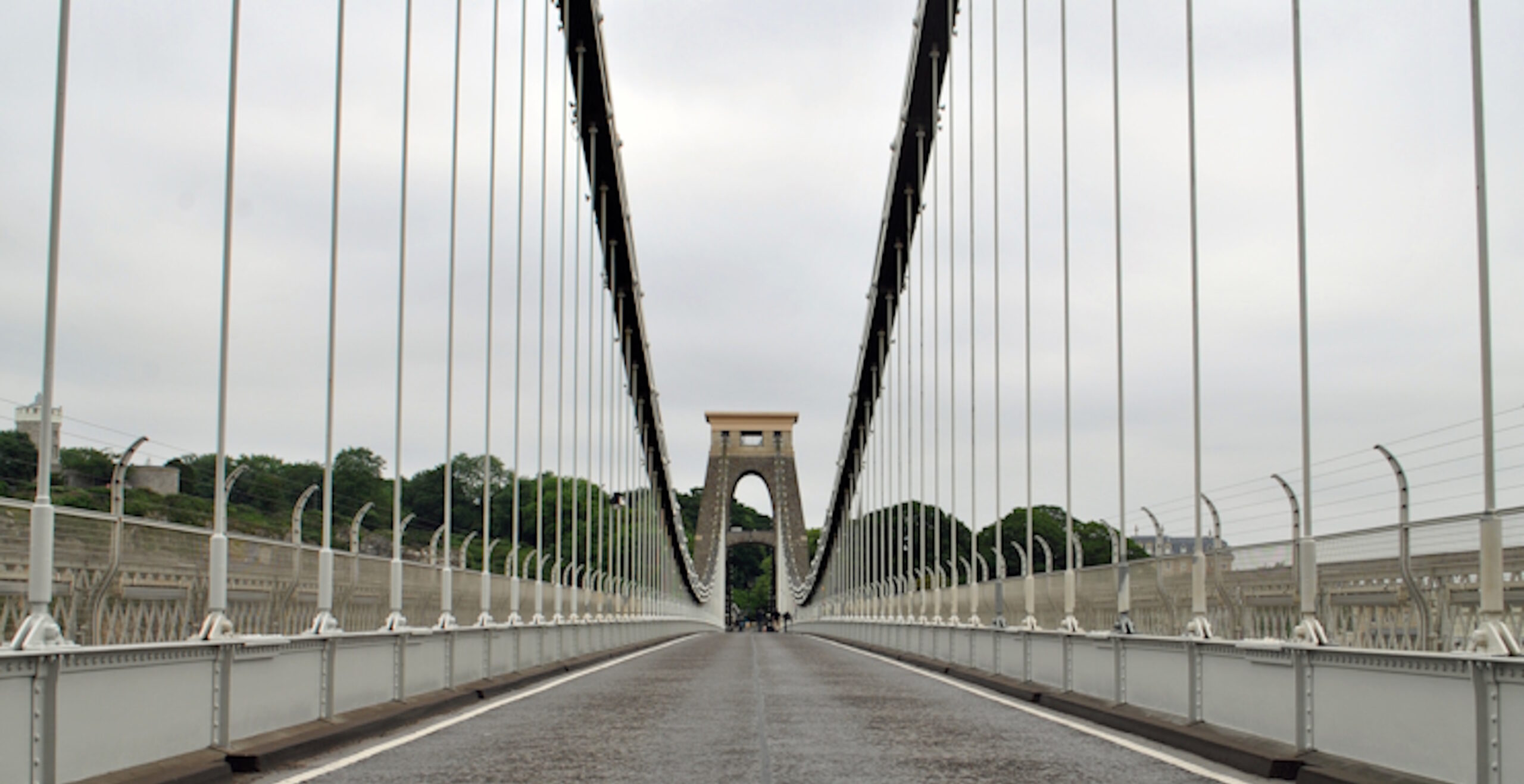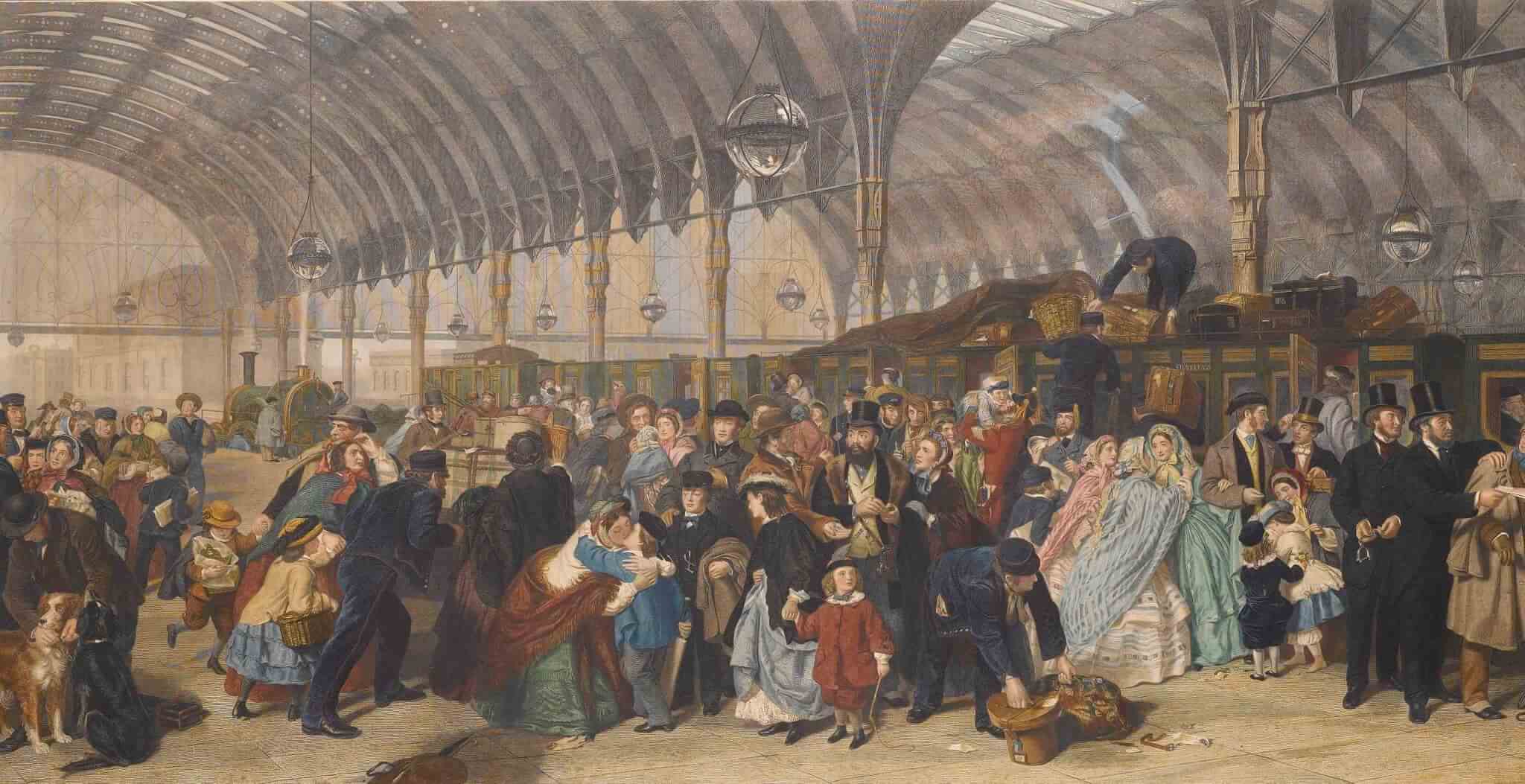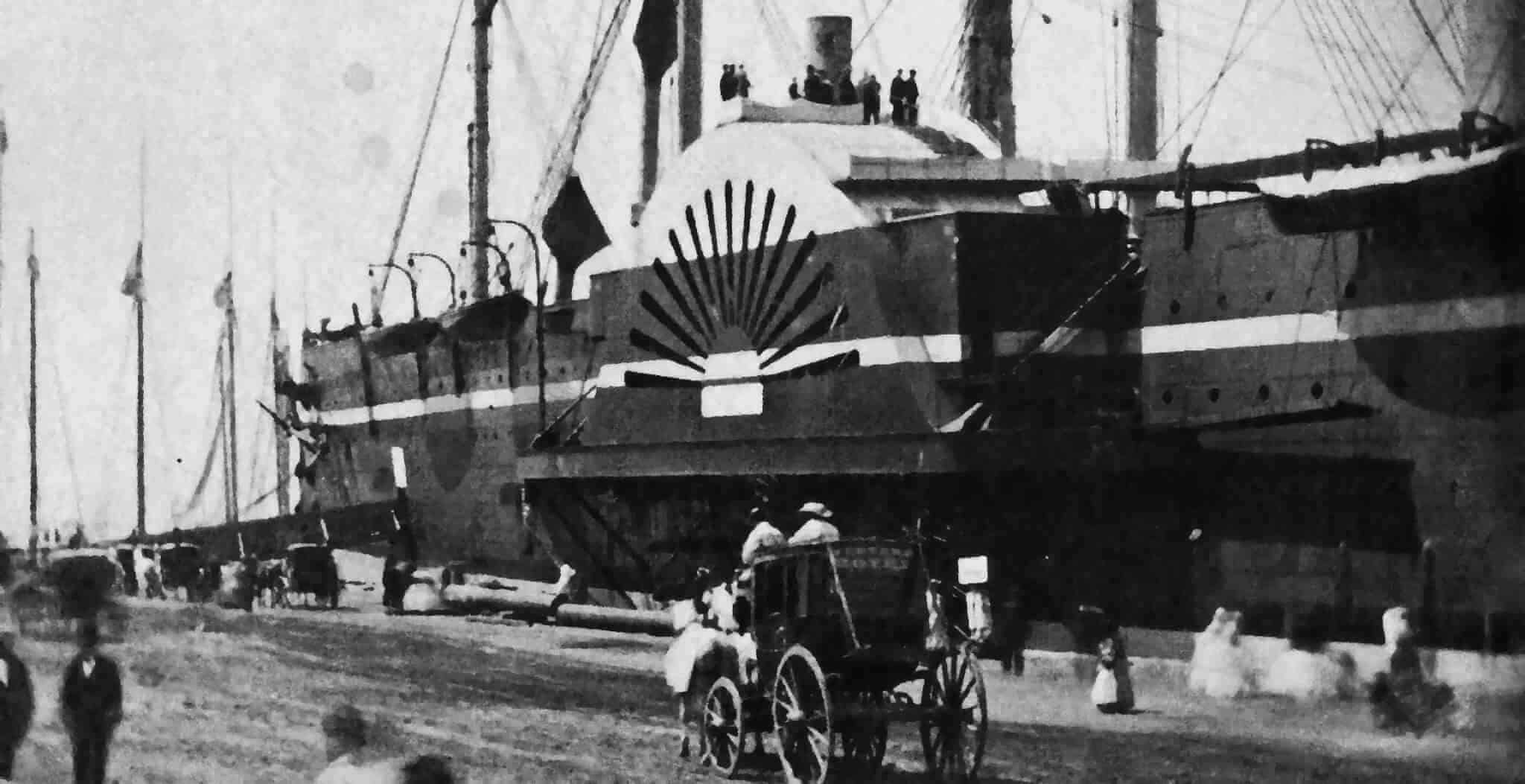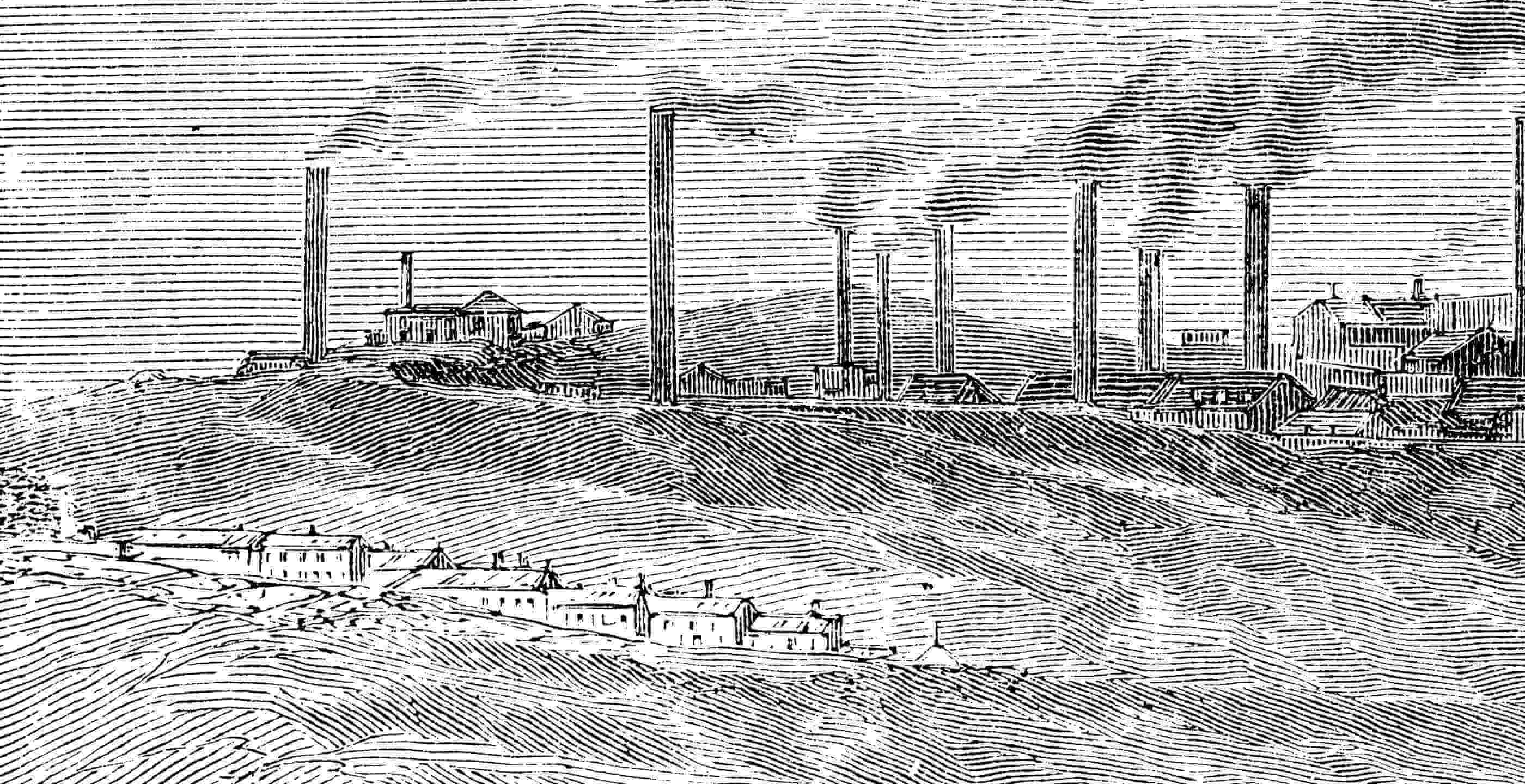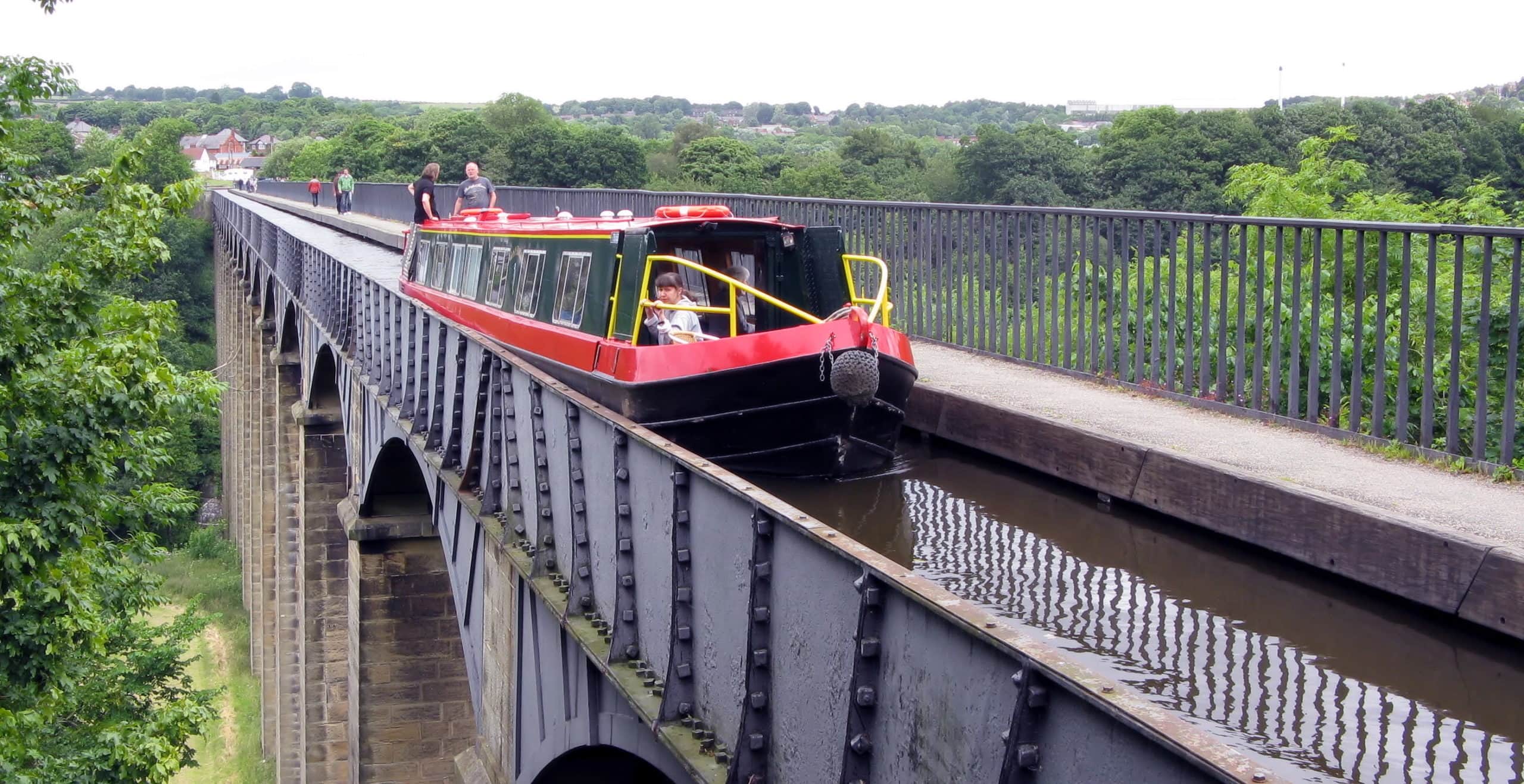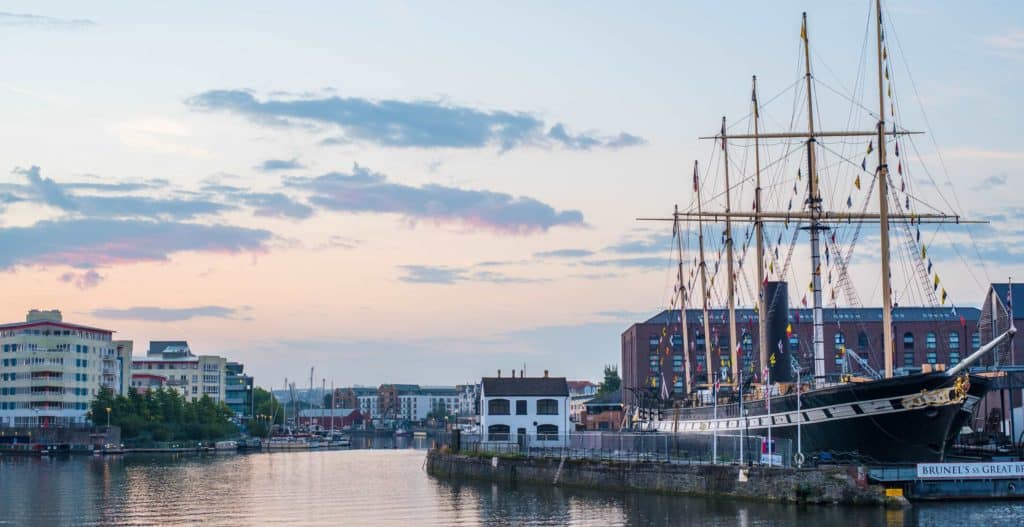Over 160 years old, the Clifton Suspension Bridge is a true treasure of the South West, standing as a global testament to Isambard Kingdom Brunel’s engineering genius. This renowned bridge is one of Bristol’s most iconic landmarks and is a popular tourist attraction. Completed in 1864, it stands today as one of the few wrought iron bridges in Europe with its original chains still intact, a remarkable feat of historical preservation.
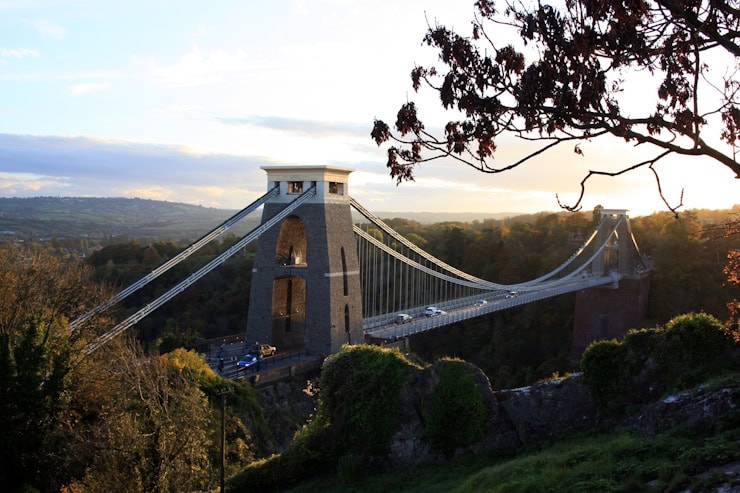
The project began in 1754 when wine merchant William Vick left £1,000 in his will to be put towards the building of a bridge across the River Avon. By 1829, Vick’s legacy had increased to £8,000. At this point the Society of Merchant Venturers set up a committee and announced a design competition for an iron suspension bridge. The winner would be awarded one hundred guineas (an equivalent of around £10,000 today). The designs were judged by Thomas Telford who considered that none were good enough to take forward; however two men – William Hazeldine and William Hawkes – were chosen as winners and shared the prize money.
An Act of Parliament to build a bridge across the Avon Gorge was passed on 29 May 1830. Despite Telford submitting his own design for a bridge, 13 entrants were shortlisted and invited to submit further designs to the committee.
This time they were judged by mathematician Davies Gilbert and engineer John Seaward. Out of these entries only four candidates were shortlisted by the pair, including Brunel. After some deliberation, 24-year-old Brunel was appointed for his first major engineering commission on 18th March 1831. Interestingly, one of his final submitted designs – a bridge in the Egyptian style – was chosen, complete with sphinxes and decorative cast iron panels on pylon-style towers.
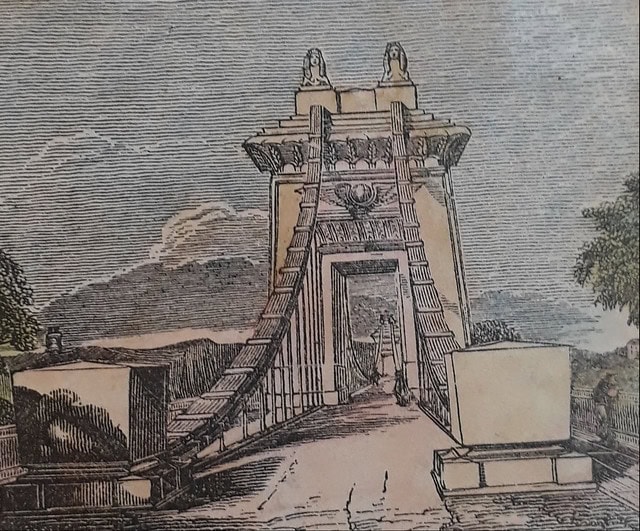
On 21st June 1831, a modest foundation stone ceremony was held. However, a few months later riots broke out in the city. After this civil unrest, funding was slow to materialise. Due to these shortfalls, expensive decorative features were omitted from Brunel’s initial design, including the sphinxes that were planned to sit on top of the structure.
It was not until 1836 when construction work began on site. As work progressed, a basket car known as the ‘Suspended Traveller’ was hung from an iron bar to allow workmen to cross the gorge. As well as workmen, members of the public would pay to travel across the gorge. This thrilling ride was used to generate additional funds for the bridge for over 17 years.
 Detail from print showing Hotwell House with piers for the suspension bridge. W. Willis artist, published by J. Harris, Bristol
Detail from print showing Hotwell House with piers for the suspension bridge. W. Willis artist, published by J. Harris, Bristol
By 1843 the abutments and towers, excavations for both approach roads and the tunnels and chambers in the rocks for anchoring the chains were complete. Half of the ironwork for the chains and hangers had also been delivered. Brunel estimated that a further £36,348 was needed to complete the bridge but the Committee were already £2,000 in debt. The project was abandoned whilst repayments could not be guaranteed.
In 1851, American engineer Edward Wellman Serrell offered to finish the bridge using iron wire at a cheaper cost. In response to this proposal, Brunel wrote to the bridge committee sharing his concerns regarding this seemingly quick and easy way to finish the bridge. In his letter, Brunel said: “If you have a wire bridge, let it be as good a bridge as if you had had a bar iron one.” Following Brunel’s intervention, the committee decided not to proceed with Serrell’s proposal – if they had chosen Serrell’s scheme the bridge as we know it today would look dramatically different.
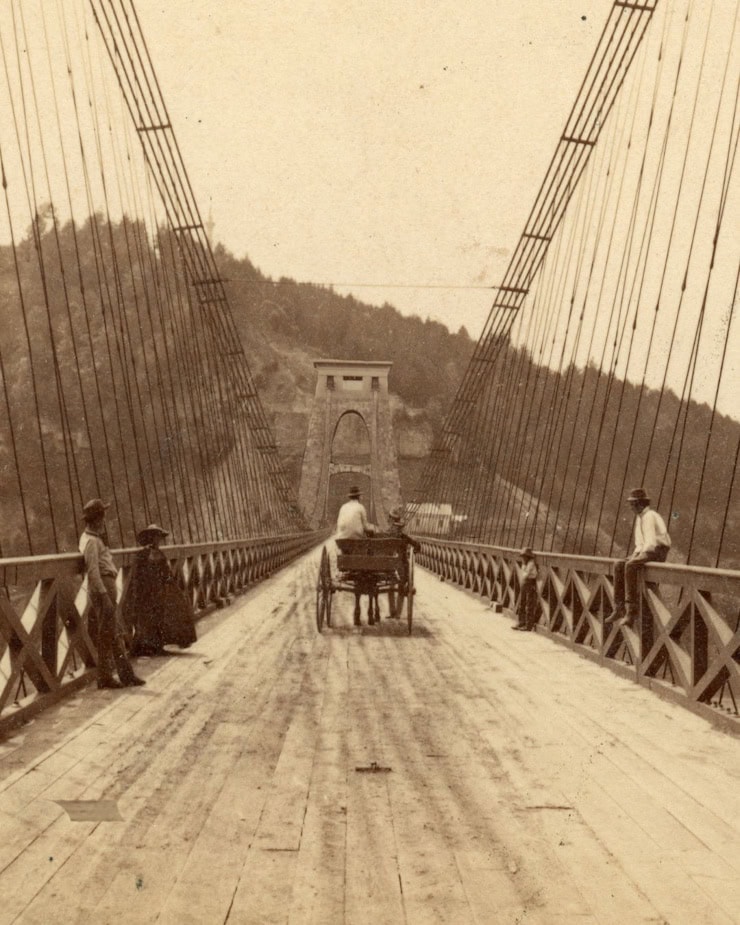
In January 1853 the Act of Parliament allowing the construction of Brunel’s bridge expired. Following this, the suspension chains were sold to be used on another of Brunel’s projects, the Royal Albert Bridge at Saltash. The iron bar used for the suspended traveller was sold as scrap and land in Clifton returned to the Society of Merchant Venturers.
Progress on the project came to a major halt and a few years later, on 15th September 1859, Brunel died at his home in Westminster after suffering a stroke at 53 years old.
Following Brunel’s death, engineers John Hawkshaw and William Henry Barlow met with a proposal to finish the bridge as a fitting memorial to their fellow engineer. At that time Hawkshaw was working on a new railway bridge in London which involved destroying the Hungerford Footbridge designed by Brunel. Here was an opportunity for reusing the iron chains at Clifton. In 1860 a new act was passed and a company was set up to attract investment By 1862 contractors, Cochrane, Grove and Co. began work on site in Bristol erecting timber scaffolding and installing the ironwork that had been delivered from Brunel’s demolished bridge in London.
On 6th May 1864, the chains of Clifton Suspension Bridge were connected. During the hot summer that followed, work began on hanging the suspension rods and fixing them to the deck girders which would support the carriageway.
Following final tests and despite rainy weather, the bridge opened on 8th December 1864. 150,000 people flooded the city streets to cheer processions of the trades and friendly societies, civic dignitaries and military. The processions met at Clifton Down at noon and, after an official parade had crossed the bridge, it was formally declared open.
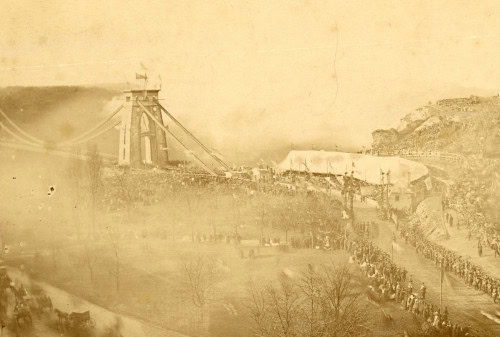 Photograph of the opening of the bridge, 8 December 1864
Photograph of the opening of the bridge, 8 December 1864
The iconic stories behind this structure are now stored within the archive at the Clifton Suspension Bridge Museum, located on the Leigh Woods (North Somerset) side of the bridge. The museum offers visitors the opportunity to learn about Brunel’s design for the bridge, the bridge’s construction, completion, and how it is maintained today. To find out more about the museum click here.
About Clifton Suspension Bridge
The Clifton Suspension Bridge connects Bristol and North Somerset and is owned and operated by the Clifton Suspension Bridge Trust. It is entirely funded by tolls – which have paid for its upkeep since it first opened to the public on 8th December 1864. The bridge is staffed 24 hours a day, 7 days a week throughout the year.
The museum is open daily from 10am to 5pm and features an award-winning permanent exhibition about the design, construction and maintenance of the Clifton Suspension Bridge. Entry is free, and tours of the bridge and underground vaults can be booked online. The museum remains open every day except Christmas Eve, Christmas Day and New Year’s Day.
More information can be found on: https://www.cliftonbridge.org.uk.
Items from the Clifton Suspension Bridge Museum collections can be viewed online at https://archives.cliftonbridge.org.uk
All images © Clifton Suspension Bridge Trust.
Published: 16th May 2025.
